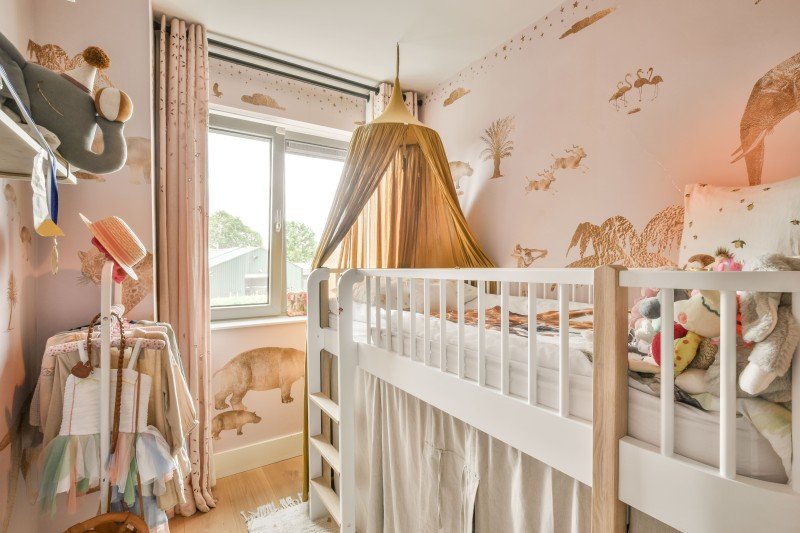A Trip Back In Time A Conversation With People About Bunk Beds 20 Years Ago
Exploring Bunk Beds: A Comprehensive Guide
Bunk beds have long been a staple in children's bed rooms, dormitories, and even homes with limited space. Not only do they supply a practical sleeping option, but they likewise produce an enjoyable and creative environment for kids and a great space-saver for adults and families. This article will check out whatever you need to understand about bunk beds, from types and products to safety pointers and purchasing advice.
Table of Contents
- Kinds Of Bunk Beds
- Standard Bunk Beds
- Loft Beds
- Triple Bunk Beds
- L-Shaped Bunk Beds
- Product Options
- Wood
- Metal
- Security Considerations
- Purchasing Guide
- Frequently asked questions
Kinds Of Bunk Beds
Bunk beds come in different styles to fit different needs and choices. Here's a breakdown of the most common types:
Conventional Bunk Beds
Standard bunks typically include two beds stacked vertically on top of one another. These beds are perfect for siblings sharing a space or for maximizing sleeping space in guest spaces.
Loft Beds
Loft beds stand likewise to traditional bunk beds however do not have a lower sleeping location. Rather, Childrens Bunk Beds russrenfro.top incorporate a desk or seating location beneath, making them a great option for small spaces requiring multifunctionality.
Triple Bunk Beds
Triple bunk beds are designed for 3 residents, with beds stacked in a three-tier setup. These are less typical however can be a fun service for big households or sleepovers.
L-Shaped Bunk Beds
With one bed placed horizontally and the other vertically, L-shaped bunk beds are often geared up with extra features such as desks or storage drawers and can complement corner spaces in a room.
Comparison of Bunk Bed Types
Bed Type
Ideal Use
Description
Conventional
Shared bed rooms or visitor rooms
Two beds stacked vertically
Loft
Small spaces needing multi-purpose space
Upper bed with open space beneath
Triple
Big households or sleepovers
3 beds stacked vertically
L-Shaped
Corner or versatile areas
A mix of vertical and horizontal beds
Product Options
Bunk beds are produced from numerous materials, with wood and metal being the most typical. Each product has its benefits and drawbacks.
Wood
- Durability: Generally robust and can hold up against years of use.
- Visual Appeal: Offers a timeless look that can blend with various decors.
- Weight Capacity: Typically stronger; can support heavier weights.
- Disadvantages: May be more expensive than metal choices and can be vulnerable to scratches.
Metal
- Toughness: Generally light-weight and easy to move but still durable.
- Modern Design: Often is available in sleek styles, making it appealing for contemporary areas.
- Cost-Effective: Usually less expensive than wood alternatives.
- Drawbacks: Can be cold to the touch in winter seasons and may not have the same visual appeal for some buyers.
Security Considerations
When it pertains to bunk beds, security can not be neglected. Here are key security suggestions to remember:
- Guardrails: Ensure that the top bunk has guardrails on both sides to avoid falls.
- Sturdy Construction: Check for a strong build and tough products to hold up against weight and motion.
- Weight Limit: Adhere to the producer's weight limit for both the upper and lower bunks.
- Ladder Design: Choose bunks with a safe, easy-to-climb ladder and prevent any sharp edges or rungs.
- Age Restrictions: Most producers advise that children under the age of 6 should not sleep in the upper bunk.
Buying Guide
When searching for bunk beds, consider the list below factors to find the best suitable for your needs:
- Space Availability: Measure the space size and ceiling height, making sure there is appropriate space for the leading bunk.
- Bed Size: Decide between twin, full, or larger sizes based on your requirements and the size of the space.
- Design Preference: Consider the general design of the bed room to find a suitable style.
- Alleviate of Setup: Look for a bunk bed that is uncomplicated to put together.
- Budget: Bunk beds come in different cost varieties, so identify a spending plan before starting your search.
Frequently asked questions
1. What is the recommended age for children to sleep on the leading bunk?
Kids aged six and older are typically recommended to sleep on the top bunk to reduce the threat of falls.
2. How can I make my bunk bed much safer?
To boost safety, ensure guardrails are correctly installed and examine that the bed is positioned on a flat surface area. Additionally, encourage kids to utilize the ladder carefully.
3. Can I convert a bunk bed into two different beds?
Lots of bunk beds are developed to be convertible. Inspect the producer's specs for convertibility features.
4. What devices are available for bunk beds?
Common accessories consist of beddings, storage drawers, staircases instead of ladders, and tented canopies for an enjoyable visual appeal.
5. How do I maintain my bunk bed?
Regular look for loose screws or structural stability can help make sure security. Dust the bed frequently and tidy spills without delay to keep the products in good condition.
Bunk beds are flexible and a space-efficient service for various living scenarios, from kids's spaces to guest lodgings. With numerous designs and materials offered, potential buyers have a wealth of choices to think about, guaranteeing a mix of usefulness and visual appeals. By prioritizing safety and following the ideas described in this guide, people can find the best bunk bed that suits their space and way of life, all while producing a pleasurable sleeping environment.
